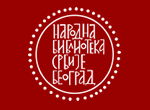The Ideology of Linguistic Purism in the Ladinokomunita Virtual Community
DOI:
https://doi.org/10.18485/beoiber.2018.2.1.16Abstract
In this article we examine the ideology of linguistic purism among the members of the Ladinokomunita virtual community, which was founded in 2000 with the aim of promoting the use of the Judeo-Spanish language and Sephardic culture. In the research we start from the idea that ideology as an integral part of social identity is something that is constructed and transformed in linguistic interaction through the use of tactics of intersubjectivity (Bucholtz and Hall 2004, 2005) and always in the function of a broader social context. Therefore, taking into account the tendencies of glocalization that operate in contemporary society, in this work we analyze the purist attitudes present in Ladinokomunita from the point of view of the social treatment approach (Garrett et al. 2003) with the aim of showing that the ideology of the linguistic purism of its members is a manifestation of broader social processes, in which attempts are made to reconstruct and revitalize the ethnic identity of the Sephardic community.
Key words: linguistic purism, ethnic identity, tactics of intersubjectivity, Sephardic Jews, Judeo-Spanish.References
Downloads
Published
Issue
Section
License
Authors who publish with this journal agree to the following terms:
- Authors retain copyright and grant the journal right of first publication with the work simultaneously licensed under a Creative Commons Attribution-ShareAlike 4.0 International License that allows others to share the work with an acknowledgement of the work's authorship and initial publication in this journal.
- Authors are able to enter into separate, additional contractual arrangements for the non-exclusive distribution of the journal's published version of the work (e.g., post it to an institutional repository or publish it in a book), with an acknowledgement of its initial publication in this journal.
- Authors are permitted and encouraged to post their work online (e.g., in institutional repositories or on their website) prior to and during the submission process, as it can lead to productive exchanges, as well as earlier and greater citation of published work (See The Effect of Open Access).















